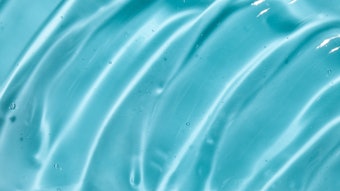
Read the full article in the February 2021 digital edition. . .
The clarity and transparency of high-water content products such as micellar gels, facial tonic waters and shower gels enhance consumer allure. A crystal clear appearance is associated with concepts of hydration, purity, naturalness, eco-friendliness and simplicity, which align with today’s trend for mild, ingredient-light products and simplified beauty routines, as exemplified by “clean” beauty.
To create this effect, formulators must choose ingredients that deliver the required performance benefits and long-term, effective and safe preservation while also not affecting formula clarity. Due to their high water content and the increased use of nutrient-rich, plant-derived ingredients, however, unless they are effectively preserved, these products provide an ideal breeding environment for microorganisms. In addition, the incorporation of natural oils and boosted preservation systems poses challenges to product clarity. For example, traditional boosters typically create opaque solutions that require additional solubilizers to achieve good transparency.
To impart multifunctional effects in clear, high-water systems using a single ingredient with natural, eco-friendly attributes, a water soluble cyclic glucamidea was developed from renewable feedstocks to serve as a solubilizing surfactant. Based on palm kernel oil—optionally, in RSPO Mass Balance grade, and glucose from non-GMO corn, the glucamide is additionally cold processable, ISO 16128 compliant, has a 93% Renewable Content Index (RCI) and is COSMOS Natural approved.
Solubilizing surfactants are capable of creating emulsion particles so small that light passes through them, thus the solutions remain clear. These surfactants are used to incorporate lipophilic materials such as essential oils, perfume oils, plant extracts, vitamin E or other lipophilic and non-readily soluble ingredients into clear aqueous and aqueous-alcoholic cosmetic systems.
The structure of the solubilizing cyclic glucamide surfactanta described herein is depicted in Figure 1, wherein R1 is a saturated or unsaturated hydrocarbon chain having seven or nine carbon atoms, or a mixture thereof. Here, the cyclic hydrophilic methyl glucamide head group in combination with the lipophilic C8/C10 alkyl chain results in an amphiphilic surface active molecule with good solubilizing properties. This is likely due to the micelle size of the different solubilizers.
The present discussion focuses on the ability of the cyclic glucamide to solubilize lipophilic ingredients and achieve formula transparency, replacing the need for additional solubilizers. This capability over a broad pH range of 4-9 is assessed in comparative tests of basic formulations incorporating natural oils. In addition, its solubilizing efficacy in comparison with traditional solubilizers is examined in a body wash. Finally, as the cyclic glucamide was previously shown to contribute to safe and stable antimicrobial protection,1 its high clarity when used as a preservative booster is examined in the context of a micellar gel.
Oil-solubilizing Efficacy
To evaluate its oil-solubilizing efficacy, the cyclic glucamide compound was added at 5% and 10% to basic natural oil formulations at different pH levels (see Formula 1).2-4 These levels were chosen because most natural solubilizers require higher usage concentrations than their ethoxylated counterparts; although note that much lower concentrations, as exemplified in later formulations, are effective and, in fact, recommended.
Orange, peppermint or geranium oil, which are known for challenging solubilities, mixed with tocopherol served as the lipophilic ingredients. To prepare the test formulas, the essential oil and tocopherol were first combined with the natural solubilizer and stirred until fully solubilized (approx. 150 rpm). Slowly, the water was added and the blend was stirred until fully dissolved (150 rpm). The DMDM hydantoin preservative was then added to the mix and stirred until homogeneous. Finally, the pH was adjusted with either citric acid or NaOH solution. The formulations were then visually and analytically evaluated after 24 hr at room temperature for transparency and classified into the categories: clear, translucent and opaque (see Table 1), based on Formazin Nephelometric Units (FNU) using a turbidimeterb.
. . .Read more in the February 2021 digital edition. . .
References
- Schaal, P. (2020 Apr). A derived natural option supporting less preservative use and more formulation flexibility. Specialty Chemicals Magazine 28-30.
- Prospector (Accessed 2021, Jan 7). Solubilizing oils into water. Available at: https://knowledge.ulprospector.com/330/pcc-solubilizing-oils-water/
- Prospector (Accessed 2020, Jan 7). Like oil in water: Tips for solubilizing oils into water. Available at: https://knowledge.ulprospector.com/5870/pcc-solubilizing-oil-into-water-tips/
- Prospector (Accessed 2021, Jan 7). Natural solubilizers and essential oils—Are they up to the test? Available at: https://knowledge.ulprospector.com/5743/pcc-natural-solubilisers-test-video/
Captions/Footnotes:
a Velsan Flex (INCI: Capryloyl/Caproyl Anhydro Methyl Glucamide) is a product of Clariant.
b Hach 2100Qis Portable Turbidimeter











